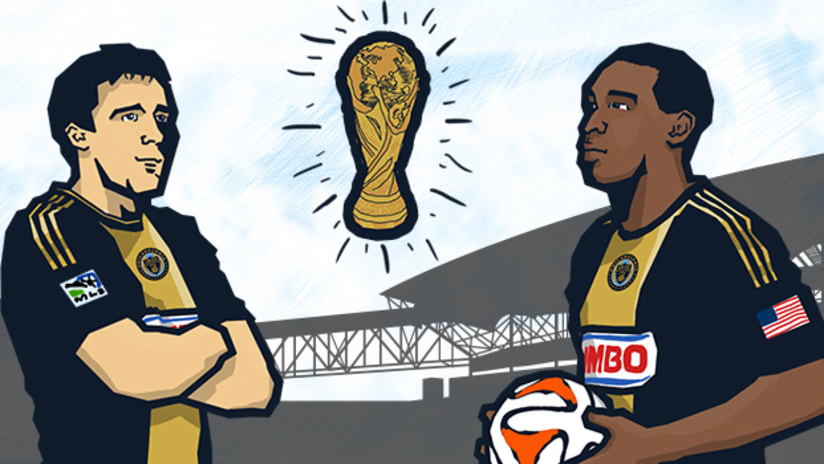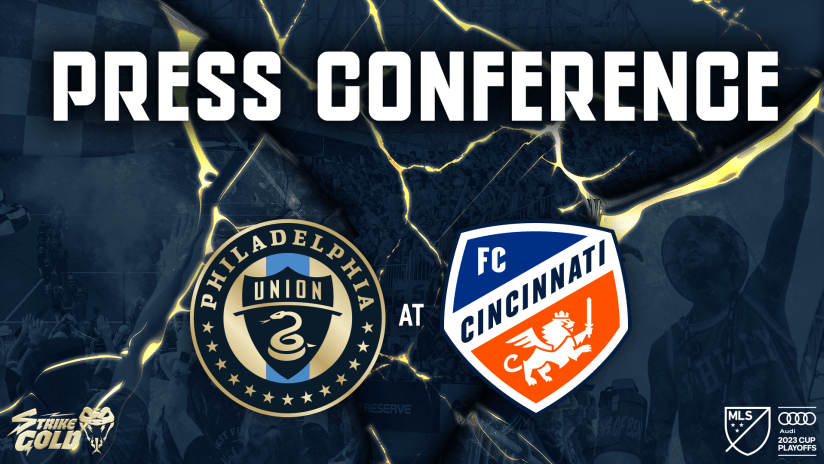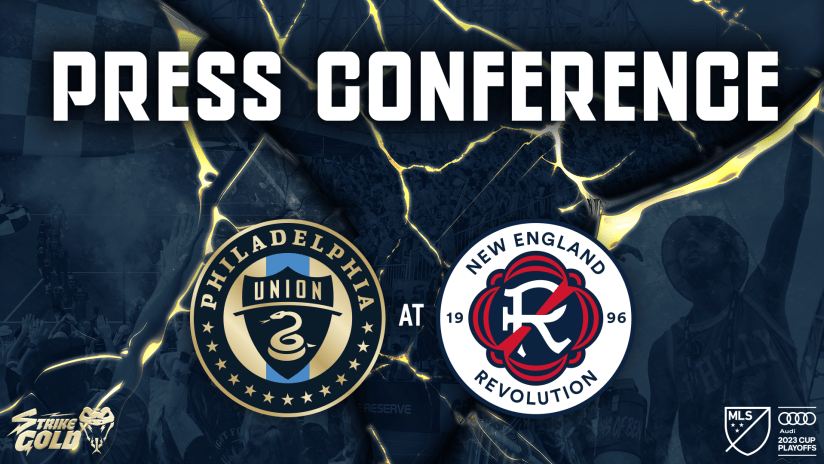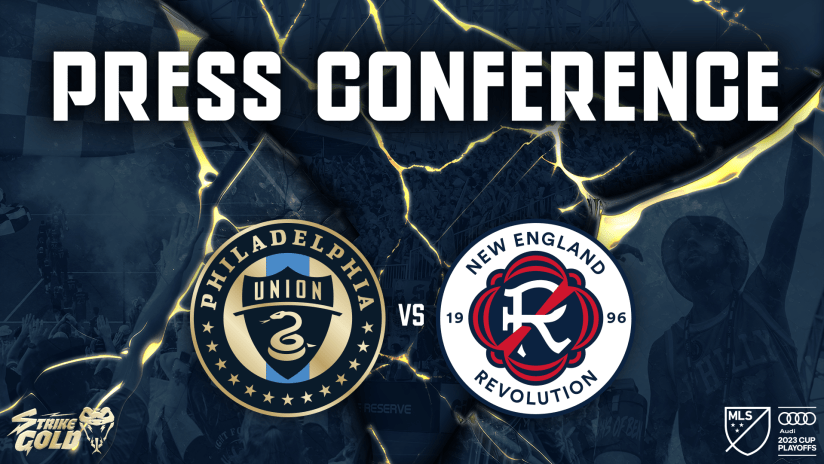Ray Gaddis sat quietly taking it all in.
Not the ambience of the Union watch party he came to for a meet and greet, but the United States and its battle with Belgium – the reason for the watch party – in second round play of the FIFA World Cup. For Gaddis, he was analyzing the play of the Americans, looking at tendencies, evaluating the traits of players that head coach Jurgen Klinsmann assembled to compete for the trophy.
Gaddis is watching all of this because by the time the next World Cup comes around he’ll be only 28-years-old. Klinsmann, who inked an extension with U.S. Soccer in December to be the man in charge through 2018, will be looking for that fresh crop of undiscovered, hardworking talent.
Four years to raise your game, get noticed and represent your country.

That’s the goal.
“Seeing so much young talent gives you a mindset that if you can continue to develop your game that anything is possible,” Gaddis told philadelphiaunion.com. “Being an American and watching what coach Klinsmann has done you can see that he’s not opposed to bringing in young players to give them an opportunity and experience. It was great insight to see that from a player’s standpoint and I think it’s a great thing to have guys in this League especially aspire to do.”
What Gaddis and so many others noticed was that Klinsmann wasn’t above giving younger relatively green players to the national scene a chance to showcase their talents. According to Statista, the average age of this year’s United States squad was 27.8 years old, with players as young as 19 years of age in forward Julian Green. But it wasn’t just the U.S.; more than 10 nations participating in this year’s World Cup fielded sides that were under an average age of 27, with Ghana having the youngest squad in the tournament with an average age of 25.9.
“This World Cup showed me especially that teams are bringing in a lot of young, unproven guys,” Union midfielder-defender Amobi Okugo said. For Okugo, who watched the month long spectacle religiously and even took to social media on a number of occasions to voice his sentiments, this World Cup offered a ton of perspective on what needs to be done if aspirations of being on the plane to Russia, the site of the next World Cup in 2018, was to become a reality.
“You can see it on the field, these [younger players] played with a certain type of hunger because they haven’t arrived yet and want to put what they can do on the map,” continued Okugo. “Particularly in the U.S.’ case, guys like [DeAndre] Yedlin and [Julian] Green took advantage of their opportunities, they had a lot of doubters when their names were called upon, but when they stepped on the field they proved it. Look at player like [24-year-old German forward] Thomas Muller. Obviously he’s older now, but when he played [at the FIFA World Cup in 2010] he was unproven. I feel like that’s the new move. Is that coaches wanted to see talent, but they also want to see young players with a lot of hunger willing to make a name for themselves.
Okugo, a current MLS All-Star hopeful who has been a rock in his five seasons with the Union will be just 27 years-old in 2018.
The game has become so much more
We’ve all witnessed the impact of the World Cup since its dominating impression on the United States in 1994. It was an event that kick started the nation’s premier league, Major League Soccer; it helped turn numerous American players into international names and has continued to expose that this game, while still a niche on the North American sports landscape has rapidly grown in popularity looking at the sheer number of rabid supporters of both the national team and all 20 MLS clubs.
What’s been exciting to watch over the years is just how much networks and brands are putting into hyping up the event as much as possible. ABC and its massive family of sports networks at ESPN brought the game into households like no other particularly over the past two World Cups with high definition quality, strong in-game commentary and more. On a brand level, sponsors of the event spent millions to showcase their company to the masses using not just advertising but social media as a conduit to get involved with the phenomena.
“First and foremost, this is the world’s game,” Gaddis said. “The United States is catching up [in terms of being glued to the sport] but you can see what the game brings to the outside world. Of course, it’s endorsement deals for players, its marketing or capturing the attention for your brand this year. Look at what Beats headphones did leading into the Cup, so many kids saw all these athletes and mostly soccer athletes wearing Beats headphones, and now correlate those really nice headphones with [Brazilian forward] Neymar, with [American forward] Jozy Altidore and other big soccer players and athletes. The ‘beautiful game’ has opened up so many avenues and aspects for young players like myself because you’re seeing the potential of what it’s continuing to become and you want to be a part of that.”
According to a recent report in Forbes Magazine, FIFA generated $404 million from marketing rights associated with this year’s World Cup, which comprised 29 percent of its annual revenue.
All of that money was spent because these brands knew that eyes around the world would be on their properties. Among those eyes were young America’s young budding soccer talents, who see all the pomp at the pinnacle of the sport and instantly become forever inspired.
“This is just the tip of the iceberg I feel when it comes to soccer and the impact that the World Cup has on it,” Okugo said. “The marketing and the media that’s generated, the success of FIFA the video game all of these things that continue to get exposure continue to help the game.”

When opportunity knocks…
What’s the right formula for success to ensure you’re on the plane to Russia in four years?
To the players asked that question there really isn’t a definitive answer.
Beyond continuing to perfect their individual crafts, there really isn’t much Gaddis, Okugo and the rest of American born hopefuls that hope to guide the U.S. to what would be its eighth consecutive World Cup finals appearance can do.
But what they saw from Klinsmann is that the days of the tenured player ensuring his survival based on past laurels is long gone. Just ask U.S. legend Landon Donovan, who Klinsmann kept of the 23-man squad to Brazil. This new U.S. group is young, hungry, talented and plays with a ton of heart, the benchmark for what the U.S. boss wants to see going forward and in the years to come.
“You can see with coach Klinsmann’s roster selections that he is picking a new type of player,” said Okugo. “This new player is not only just technical, not only just physical but you have to have a bit of everything especially with the way the game is changing. The teams that have had the most success have players that recognize how to adapt to the competition and not play one-dimensional. I feel like Klinsmann is looking for that well rounded type of player and I try to model my game off that. Look, I’ll be honest I’d be lying if I told you I don’t think about what it would be like to represent my country on a senior level, so I am just making sure that I showcase my talents in whatever role I have to play in here [with the Union], and hoping it works out for the best going forward.”
It’s much of the same for Gaddis, a self-titled “student of the game” who thinks that for any for any professional player, the opportunity to represent your country on a senior level is one that none of the young players looking to wear the red, white and blue in a World Cup is something that should not be taken for granted.
“This game is evolving and progressing all the time so it’s important for players to evolve while progressing as well,” said Gaddis. “To me, it comes down to what separates you from that other guy? That’s a question as player you have to ask…daily.”
Which Union player do you think is on his way to World Cup fame? Leave a comment below.
Contact Union digital editor Kerith Gabriel at kgabriel@philadelphiaunion.com













